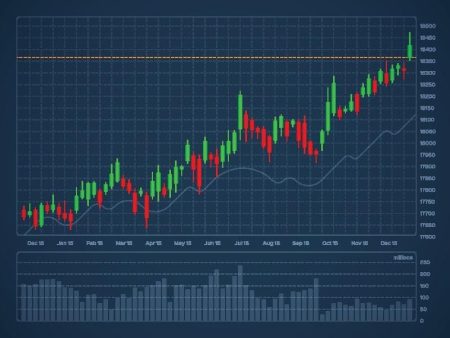“Don’t fight the Fed” is a stock market mantra that has proven true thus far in 2023. The Federal Reserve’s campaign to halt inflation has been implemented by 11 interest rate hikes amounting to a cumulative 5% increase in the Federal Funds rate. While investors seem to have gotten the message, the US Government continues to “fight the Fed” with inflationary spending and borrowing which has driven the cost, ultimately borne by US taxpayers, to concerning levels. Come on man, stop the wanton spending and we solve all the ills right now. Federal Deficit, Federal debt, Federal debt service, interest rates, too strong an economy, practically negative unemployment are all rooted in excess government wasteful spending.
The Fed is technically an independent entity, but its operations are closely entwined with the federal government to the point that many view the central bank as something of a fourth pillar of government along with the Executive, Judicial, and Legislative branches. Viewed in that light, it is perplexing how the actions of the Executive and Legislative bodies so frequently work against the goals of the Federal Reserve. Given the constant communication between the Fed and the Federal Government, one would expect the two to be on the same page regarding spending and servicing the federal debt.
For background, the Federal Government generally spends more than it collects in tax revenue and issues bonds to make up the funding shortfall. The US has only experienced a fiscal year-end budget surplus five times in the last 50 years, most recently in 2001. When the Fed cut interest rates to 0% during Covid-19, it offered a rare opportunity for the Treasury to extend the duration of its borrowing and lock in ultra-low rates for the next 30 years. Yet the Treasury did not meaningfully increase its long-term borrowing. It was a historically poor financial decision, as billionaire investor Stanley Druckenmiller recently noted, “Janet Yellen — I guess because political myopia, whatever — was issuing two years at 15 basis points when she could have issued 10 years at 70 basis points or 30 years at 180 basis points.”
While it is not a completely fair analogy given the size of government borrowing and its role in maintaining a degree of predictability for geopolitical stability, Druckenmiller also noted that most American homeowners jumped at the rare opportunity to lock in mortgage rates along with a record-setting wave of corporate refinancing. It is puzzling that the Treasury wouldn’t recognize the opportunity to drastically increase long-term borrowing, or even issue special extended-duration bonds with 50-year maturities while rates were at historic lows.
Now that the opportunity has passed, the Treasury is faced with paying above 4.5% interest on its long-term borrowing. The cost of servicing the debt increased by 25% over the first three quarters of the year, reaching $652 billion. Official estimates from the Congressional Budget Office show that the interest costs alone are on pace to exceed Defense Spending around 2028.
Figure 1. Projected Net Interest Expense vs. Other Government Spending Categories
The Treasury Department’s failure to lock in low rates is only part of the problem. The Treasury is also responsible for paying the bills that Congress racks up. Excessive, wasteful Congressional spending is a perpetual complaint but this time, we may truly be at the breaking point.
Federal spending falls into three buckets; Mandatory, Discretionary, and Interest Expense. As previously noted, the Interest Expense component is growing at an unsustainable rate due to the Fed rate hikes. Mandatory spending encompasses Social Security, Medicare/Medicaid, Unemployment Insurance, and Supplemental Nutrition programs. Social Security, Medicare, and Medicaid make up nearly 50 percent of total Federal spending. Discretionary spending is roughly 30 percent of total spending, with about half of that being Defense spending. The other, non-Defense, discretionary bucket covers education, transportation, veterans’ health care, homeland security, and other programs. The US also sends around $69 Billion to foreign governments, with Ukraine and Israel presently being the two largest recipients.
Figure 2. Components of Federal Spending
Numerous government watchdog agencies, along with the Government Accountability Office’s (GAO) official data, point out that the Federal Government wastes billions of taxpayer dollars each year. For example, improper payments, the category capturing federal funds being sent to the wrong recipient or in the wrong amount, cost the US $247 billion in 2022 and $2.4 trillion over the past two decades according to the GAO. The government also wastes $1.7 billion each year on empty government office buildings, over $500 million in payments to deceased individuals, and countless other examples. Aside from the wasteful mistakes, the government also loses a staggering amount of money to fraud (despite spending additional money on oversight). The rushed Paycheck Protection Program, meant to help small businesses survive the Covid-19 pandemic, resulted in the distribution of over $200 billion in fraudulent loans. If government debt was not such a serious issue, some of the wasteful spending could be considered comical, such as the $28 million on woodland camouflage uniforms for the Afghanistan desert.
Some lawmakers love to point out the waste, and many build their campaigns around it by promising to stop wasteful spending once and for all. At the end of the day, however, nearly all politicians end up adding their own earmarks and contributing to the cycle of unsustainable spending. There appears to be a fundamental problem with the free-spending mentality of our lawmakers, and it stems from the top-down juicing of the economy that has carried the US through the last two major crises (the Global Financial Crisis, or GFC, and the Covid-19 pandemic). The government has become addicted to fiscal stimulus to promote growth, and this is true of both major political parties. For a while, it has worked.
The US spent more aggressively coming off the Great Financial Crisis (2008-2009) than Europe, with fiscal stimulus amounting to 10% of GDP, a 13.1% increase to the fiscal deficit in 2009. The EU only spent about 2% of GDP, widening the deficit by around 5.6%. While stimulus alone was not responsible – the EU had numerous issues being a loosely organized geopolitical bloc – the performance of the US stock market vs the rest of the developed world speaks for itself, as shown in the below chart. Of course almost all of the successful tech giants that drove so much of the S&P 500 gains in that era have been US based (Apple
AAPL
MSFT
GOOG
AMZN
NFLX
Figure 3. SPY
PY
SPY
EFA
The US’ rebound from the Covid-19 pandemic only widened the gap between the US and its peers. Congress saw a booming stock market and concluded that the US can perpetually spend its way to prosperity. The problem, of course, is that the growth was artificially juiced by ultra-low rates.
The debt-fueled economic stimulus, along with temporary pandemic supply chain issues, is the root of the inflation which the Fed is now desperate to halt. The Fed is also attempting to get its own fiscal house in order by running down its balance sheet. This, again, is at odds with the Federal government’s debt addiction since the Fed was a significant buyer of Treasury securities in the past. The Federal government needs to take a page from the Fed’s book and at least attempt to balance its budget because the current path is completely unsustainable even if rates were to decline from their present levels.
There are of course, two ways to balance a budget; cut spending or raise revenue. Increasing revenue means raising taxes and politicians are loathe to bring up tax hikes heading into an election year. Many of provisions from the 2017 Tax Cuts and Jobs Act are set to expire by the end of 2025. The Congressional Budget Office concluded extending these tax cuts would cost nearly $3.5 trillion over the next decade. A bill proposed in February sought to make the tax cuts permanent, and it will likely be a focal point of many campaigns as we roll into the 2024 election year.
Unfortunately, promises of giveaways, be they lower taxes or increased spending, tend to attract more votes than messages of austerity. The Federal government urgently needs to address the situation and raise taxes, cut spending, or some combination of the two. The shortsighted nature of our political leaders – both the elected members of government and the appointed leaders of the Fed and Treasury -is alarming and could have a catastrophic impact on the future growth and prosperity of the country.
But no matter what, the Federal Government needs to slow the stimulus and giveaways that constantly juice the economy, and not keep creating inflationary fires which the Federal Reserve Fire Engines (via rate hikes) must be deployed to put out.
So, politicians, take Wall Street’s advice, don’t fight the Fed, and give the Fed a break by slowing the spending to help to cool inflation, which will reduce interest rates, reduce budget deficits, reduce federal debt growth. Now is a good time.
Read the full article here









